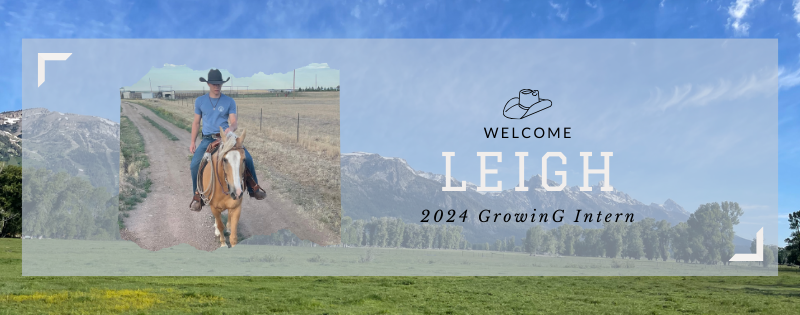“Workin’ Like a Dog, Slavin’ on the Fence Line”
#bfrdpwy #aginternship #RightRisk
I suppose it would shock few people to say that on Monday, I found myself on a fence line again. What might shock some folks a bit, though, is that this particular fence line was woven wire. For those of you who aren’t aware, woven wire (though it goes by many different names) is handy for a few different situations, though none of those reasons really align themselves with cattle. It’s not great for keeping the bigger critters in—it doesn’t stretch, it doesn’t hurt, it’s expensive, and it’s a thorn in the side to move around (as I learned). However, it is pretty good for sheep, which is exactly what this wire was there for. My host bought this section of the ranch from a neighboring sheep farmer and has been slowly converting it to cattle country since; Monday found myself and a few local high school boys taking part in that by ripping it out. For three days, we worked our tails off pulling, cutting, and tearing that wire out of the ground—and I do mean “out of the ground.”
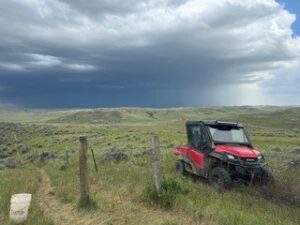
See, woven wire is a lattice of thin wires netted together in small grids. This means that over time, as plants grow, winds shift dirt, and animals tromp about, the wire slowly sinks into the earth and becomes one with it again. However, you can’t just completely ignore the bottom wires that have decided they belong to Gaia again—the vertical wires make sure of that. So instead, you must rip them out or cut them off, if necessary, to get the bulk out.
Fortunately for us, a sizeable amount of labor was sped along by the inventions of the 21st Century—namely, the side-by-side. With that motorized miracle, we could hook the wire to the hitch by a chain and rip it out of the ground, all in one, without a concern for the pesky sagebrush (which we had to cut, previously, with a Sawzall), the grippy ground, or any of the myriad other plants that had woven themselves into the latticework. Once we pulled the wires, we pulled the T-posts out of the ground, rolled the wire, stacked it all on a flatbed, and hauled it away for recycling.
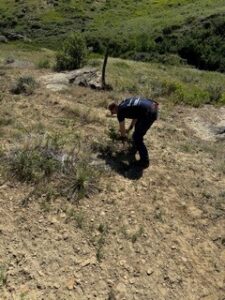
Thursday was more walking, sure, but definitely more enjoyable, as it found us in one of the coolest mountain ranges in the world: the Bighorns. Here, we were walking the fence line, looking for gaps and snaps in the (absolutely wonderful) barbed wire. Compared to the woven wire I had spent most of the week on, this was a blessing. Another cool thing about it was that I found myself on my own—which meant listening some Chris LeDoux, Cody Johnson, and the sounds of the Bighorns—which mostly sound like wind, flies, and creeks.
On Friday, we learned the ways of catching bugs. The bugs we were snaring were actually pretty neat little critters—they’re called flea beetles, and they’re a species from Eurasia. What’s cool about these is that they’re plant specific to an invasive species called leafy spurge, which is a noxious weed that cattle won’t eat and chokes out good/native vegetation. You can spray spurge, but the roots stretch deep in the earth, so you won’t get a permanent kill and will find yourself spraying again every three to five years. Flea beetles, though, offer the perfect solution, because these little parasites will eat the roots and the leaves of the spurge and kill it at the source, so that it’ll never come back again.
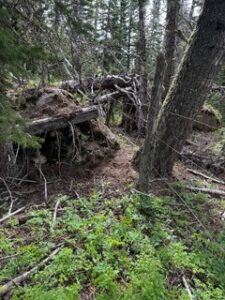
The trouble with flea beetles, though, is that they’re helpless. Flea beetles are terrible at moving around from spurge patch to patch, so they have to be helped along before they eat themselves out of house and home—literally. One does this by giving a ranch hand a net and telling him to scoop up a thousand bugs at a time and putting them in containers in a cooler for transport, thereby transforming him from a cowboy into a bugboy.
As such, the highschoolers and I found ourselves bugboys for the duration of the day. Saturday saw a brief morning of preparation for the coming week of haying before the end of the work week and the start of true summer—that point forward appears to be no cooler than 90.
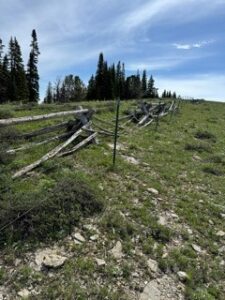
As for takeaways this week, I think the biggest thing is to “make hay while the sun’s out,” so to speak—get after the must-dos while the gettin’s good. Had we not busted our backs ripping out that fence, we would have found ourselves doing it much more miserably in 90-degree heat, so I’m glad we got it done when we did.
Secondly, as the mountains taught me, when the environment offers good, solid fencing (like a rockface) take it and don’t make life harder than it needs to be by putting up man-made fence.
And finally, I’m thinking maybe it’s best to think twice before buying land from a shepherd—or at least have some extra cash and the local high school on speed dial before you pull the trigger.
Submitted by: Leigh Stockton
Edits by: GrowinG Internship Team

